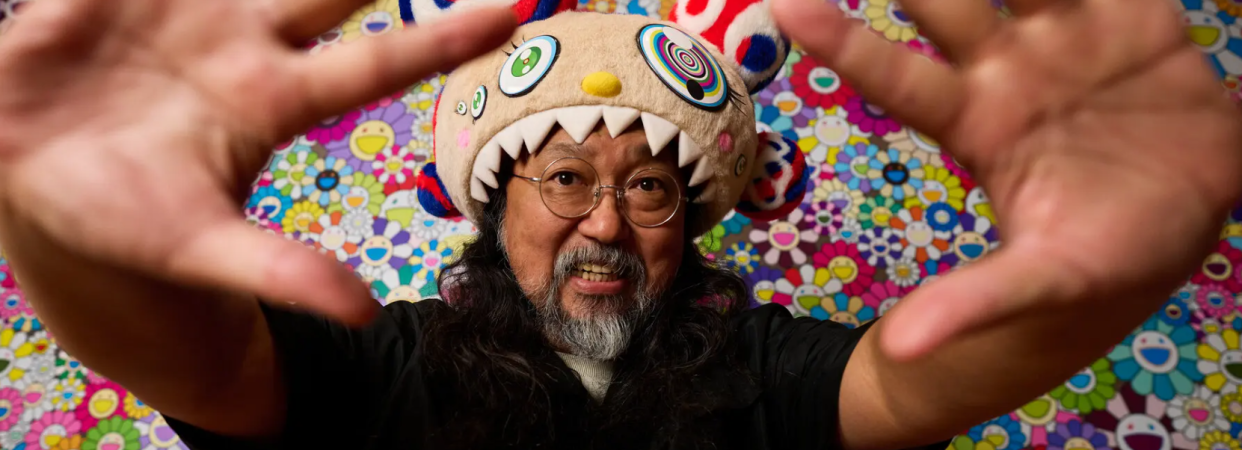Takashi Murakami sat dashing off a portrait of the artist Shahzia Sikander, one of several high-profile personalities he would sketch that afternoon in late April in advance of his new exhibition at the Cleveland Museum of Art. Cameras clicked and whirred, focused less on his subjects than on the artist himself, who was kitted out for the occasion in a pair of wire-rimmed glasses, a loosefitting frock coat and an outsize helmet that lent him the look of a rainbow-crested chicken.
The peripatetic Tokyo-based artist, entrepreneur, cultural critic and self-styled brand had arrived in the wee hours to oversee the installation of “Stepping on the Tail of a Rainbow,” his exhibition, set to open to the public on May 25, complete with a full-scale replica of a portion of an ancient temple at Nara in Japan.
But Mr. Murakami, 63, seemed to take the moment in stride, sketching tirelessly as a small crowd craned to take in his performance. His playfully eccentric get-up was conceived partly to captivate his followers. They are the critics, collectors, hypebeasts and, at least as ardently, a world of tastemakers and style-setters — among them Usher, Pharrell Williams and the fashion entrepreneur Sarah Andelman — who travel in his orbit.
Some have embraced him as a puckishly endearing mascot, the irreverent embodiment of his daftly cartoonish characters. Those with deep pockets collect his work. Others, for whom high art is out of reach, snap up one in a steady proliferation of small-scale interpretations of his most familiar pieces: the trinkets, T-shirts, housewares and handbags that serve as a relatively accessible form of brand extension.
His image, a variation on the manga and anime and emoji-inspired characters that populate his work, is strategic. “Takashi is a style icon, aware of the role an artist can play in a public sphere,” said Sky Gellatly, who forged relationships between Mr. Murakami and a number of artists and lifestyle brands. “His attention to the details of his outfits are part of a holistic expression for his work and his collaborations.”
Well aware of some followers’ cultlike enthusiasm, the artist himself is loath to let them down. “In a competitive world, there are just two choices,” he said. “You can make a new movement,” he explained, referring to Superflat, a Murakami coinage for a pop-infused movement that erodes the distinction between fine art and commodity. “Or you can be the new guy.
“That is why every two years I change my style,” he said. “That way, the audience may be thinking, ‘Oh, this is not boring.’”
Small chance. Indeed, Mr. Murakami is having a buzzworthy year. His show in Cleveland is an expanded version of one in 2022 at the Broad in Los Angeles. He exhibited with Gagosian in London and, just last week, arrived to take in his show at Gagosian in Manhattan. The exhibition, “Japonisme, Cognitive Revolution,” inspired by traditional Japanese art, highlights Mr. Murakami’s interpretation of prints by the 19th-century master Utagawa Hiroshige.

